Interview with Stephen Bulger(S.B) by Emese Krunák-Hajagos(E.K-H)
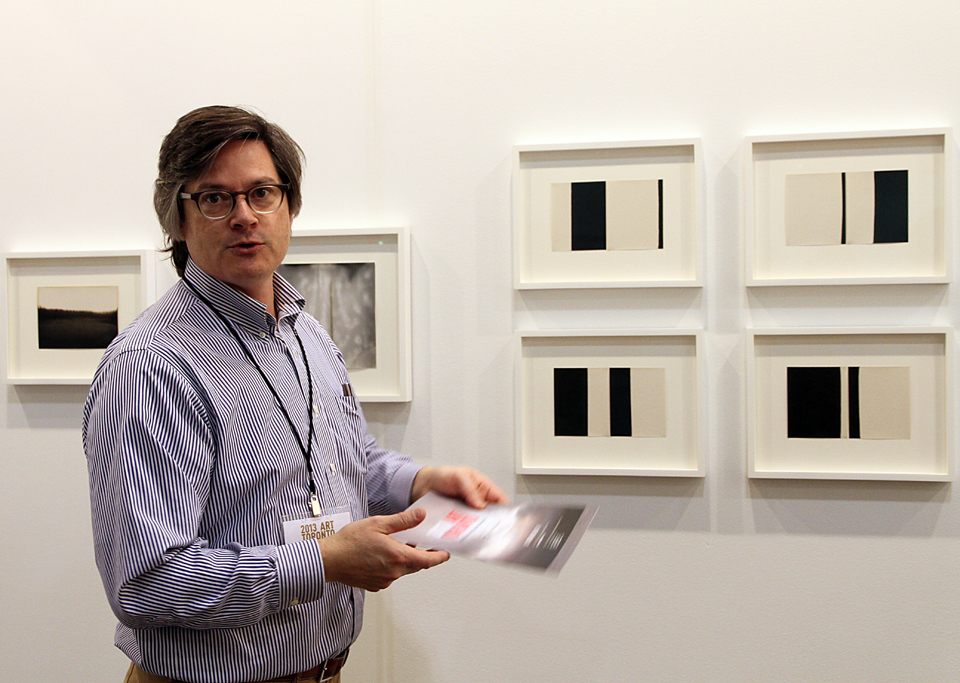 Stephen Bulger introduces Alison Rossiter’s work in Art Toronto, 2013. Photo: Margaret Irving
Stephen Bulger introduces Alison Rossiter’s work in Art Toronto, 2013. Photo: Margaret Irving
E.K-H: I remember when critics were arguing in the 1980’s about whether photography was an art form or not. What made you decide to open a Photography Gallery in March, 1995?
S.B: I started as a photographer expecting to have my work seen in galleries. When I went to Ryerson I started curating student exhibitions, and then in my third year we opened the Ryerson gallery at 80 Spadina and I was its first manager for about two or three years. During that time there were lots of things I liked about the gallery, but also things I thought were shortcomings. So I started to fantasize, if I had my own gallery, what would I do? I went as far as putting together a business plan. Luckily I have older siblings that were trained in business practices, so I could learn from them. Their guidance was crucial to me being able to open a gallery that was able to sustain itself. I think there are a lot of great ideas out there, but if you don’t have a business plan behind it, it’s difficult to sustain that dream. There [was] a lack of appreciation for photography in Toronto. I thought I might be in a position where I could do something about that.
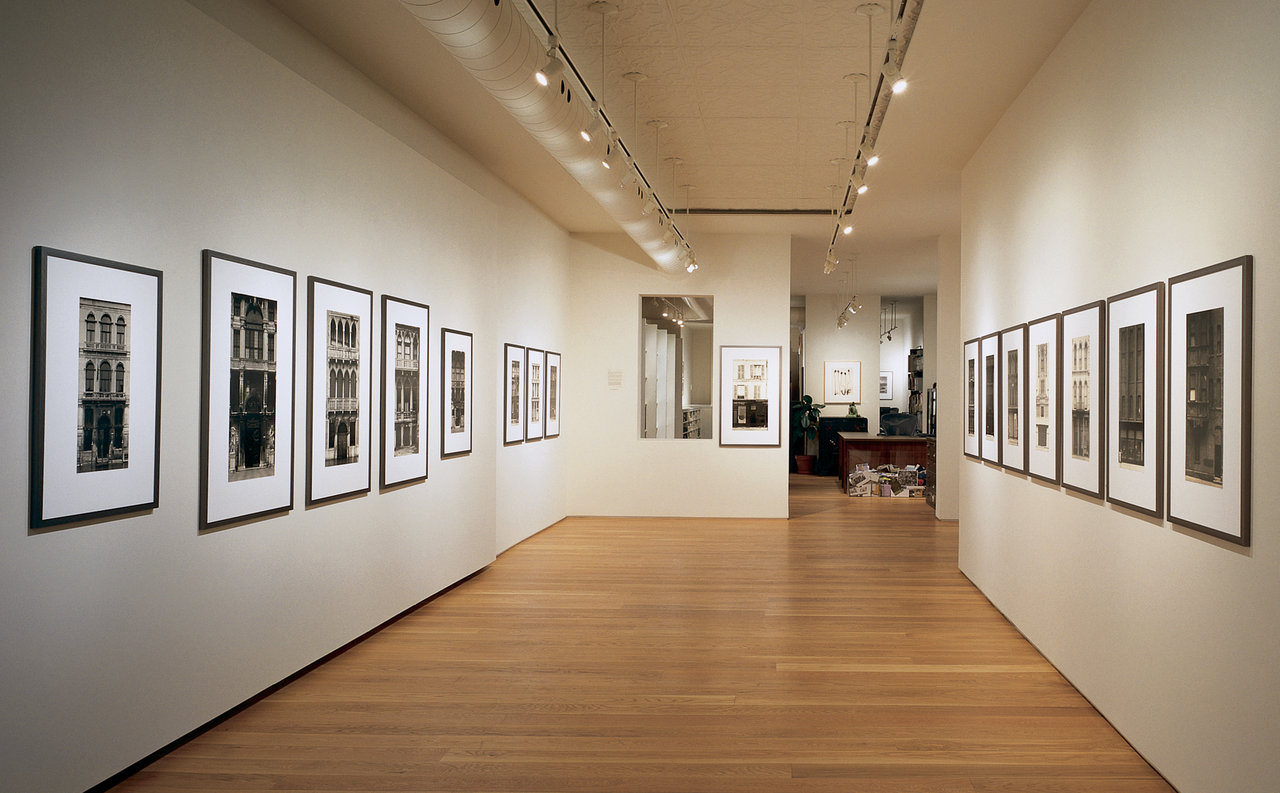 Installation view of Volker Seding’s show. Courtesy of Stephen Bulger Gallery
Installation view of Volker Seding’s show. Courtesy of Stephen Bulger Gallery
E.K-H: A few years after I came to Toronto, Volker Seding introduced me to Stephen Bulger Gallery and I was amazed by the quality of the art displayed. How did you get your inventory of 15,000 photographs and how do you select your artists?
S.B: I built it slowly. When I opened the gallery, I owned maybe a dozen photographs that I was willing to sell. I traded with a lot of people when I was at Ryerson, and bought some photographs by students, staff and faculty. In terms of having an inventory, it probably started in 1994, when I was consciously working towards the opening of the gallery and realizing that I needed inventory. Sometimes I bought groups of photographs, and other times just one at a time. In terms of selecting them I am looking for fascinating images. I like artists who are different from the main stream, and if I am interested in their point of view and I see a consistency and a dedication in their career, then I represent them. I also decide whether I can actually help them or not, because if I just like the work but I don’t think I can sell it, there might be other galleries I think they would be better with, then I don’t get involved.
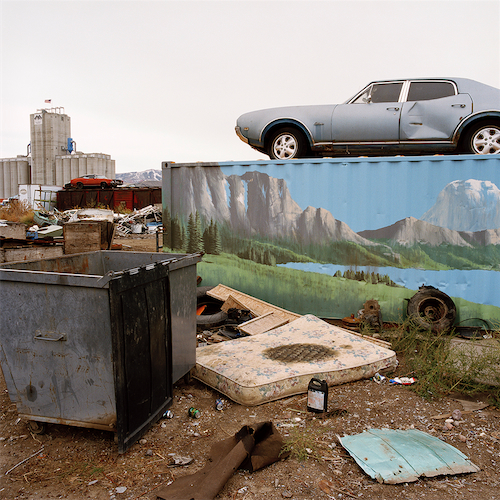 Phil Bergerson: American Artifacts, Pocatella, Idaho, 2007. © Phil Bergerson / Courtesy of Stephen Bulger Gallery. A book was also published under the same title by Ryerson Image Centre, 2014.
Phil Bergerson: American Artifacts, Pocatella, Idaho, 2007. © Phil Bergerson / Courtesy of Stephen Bulger Gallery. A book was also published under the same title by Ryerson Image Centre, 2014.
E.K-H: You mentioned that you deal with first and second time buyers. Could you please give us some details about the process?
S.B: My gallery deals in both the primary and secondary markets and caters to all types of buyers. The primary market is when you receive works on consignment from the person who made them, and when I sell them I keep a share and remit a share to the photographer. That is the primary market because I’m selling something for the very first time. The secondary market is works being sold for the second, third, or maybe the twentieth time. Works that are coming back onto the market are referred to as secondary market, which is what you see at auctions houses, paper shows, and a lot of the older photographs we deal with here. The gallery attracts many people who are interested in purchasing artwork but they’ve never done it before. I think the reason for buying photography is that people feel comfortable around it. They’ve taken pictures themselves and think they can analyze whether a photograph is good or not. It is something I do myself too when I am looking at a new work, and if I think I could have done it then I am certainly not interested in representing it. When people are wowed by a photograph, they are coming from a very informed decision because they know that they have tried to take pictures like that but failed and here is someone who has succeeded. In terms of first time buyers, we wait for them to get a sense of what it is they are really looking for because often they don’t know what they really want. They might come in looking for colour landscape and they walk away with black and white architecture. Many times they might have narrowed their selection down to five works by three different artists that we have shown them. If they are novice buyers they’ll tend to act on impulse and look at something that is graphically the strongest. Whereas what we really want them to do is concentrate on those which are emotionally stronger. We usually like them to take a bit of a break and walk away from the works and wait and see which one they are thinking about more when they are not actually staring at them. In many cases they buy the one they might have dismissed earlier, the one that somehow intrigues their psyche, and they will continue to be interested in it. If they pick something based on its graphic qualities that tends to wear away after a short time, because it is just graphic design in the end and doesn’t fit their emotions as much as a piece of art does.
 Larry Towel, Isaac’s First Swim, Lambton County, Ontario, Canada, from The World from My Front Porch series, 1996, Gelatin Silver Print. © Larry Towell / Magnum Photos. Courtesy of Stephen Bulger Gallery
Larry Towel, Isaac’s First Swim, Lambton County, Ontario, Canada, from The World from My Front Porch series, 1996, Gelatin Silver Print. © Larry Towell / Magnum Photos. Courtesy of Stephen Bulger Gallery
E.K-H: Your gallery has grown and become famous — and not just in Toronto. What is the secret of making a gallery so successful?
S.B: The most important thing is to be committed to what you show. Galleries that are interesting are the ones that have a personality. I think the personality of the gallery should reflect the owner—the one person making all the decisions, like selecting the artists and artwork. Good galleries have a point of view, and if you’re interested in their point of view then you’ll be interested in what they present. The other thing is to recognize the international market. When I was first developing this business plan, the simplest thing to do was to survey galleries in New York where there is a large concentration of photography galleries. I would walk in and if I saw something that I liked and could afford I purchased it. I would watch the whole transaction and see what I liked and didn’t like about it. I analyzed the whole process and at the same time I created a network. After buying a piece I felt that I could ask them something, so I’d say, “by the way, I am going to open a gallery in Toronto and I have a few questions.” Then they saw me as a colleague and they were supportive and willing to talk about the business. It has worked out and I still have good relations with those galleries.
E. K-H: Stephen Bulger Gallery is internationally known. You just came back from Montreal where you attended the Papier show. How was it? How is your representation in other international shows and art fairs?
S.B: Papier was a very good show. It had very good material on display. It was the right size in a good venue at a good location. It went really well. Like every art fair that I do, I try to put a booth together that I think is suited for that art fair and I try to display interesting material presented with a strong sense of design. I like putting exhibitions together in a manner that is pleasing to the eye. When I first started doing art fairs, I didn’t do that. I remember doing one in Chicago in 1997 or 1998, and what I did at the time was show one work from everybody—displaying it in a salon style.
 Alison Rossiter, Lament, Dassonville Charcoal Black, expired May 1946, processed 2009, Gelatin Silver Print, 7 x 5 inches. Courtesy of Stephen Bulger Gallery
Alison Rossiter, Lament, Dassonville Charcoal Black, expired May 1946, processed 2009, Gelatin Silver Print, 7 x 5 inches. Courtesy of Stephen Bulger Gallery
There were two things that led me to change that. A buyer had purchased something from me, and he asked “Where are you from?” When I said “Toronto, Canada,” he replied, “Wow, I just assumed you were American. There is nothing about your booth that strikes me as being different from these American dealers.” And when I looked at the art fair in general, I realized it was exhausting for people because every one of the forty or fifty booths looked like mine— where there was tons of stuff on the walls and more things than you can flip through, almost a bit of a garage sale where the objects were just more expensive. I didn’t think it was a very sophisticated. It was very different from my gallery where I really do just one idea at a time. I started to change how I presented at art fairs, and use the opportunity to display what I show and how I like to show it. It is very much about building relationships. I may not sell anything at the time but I want to impress upon them how important photography is.
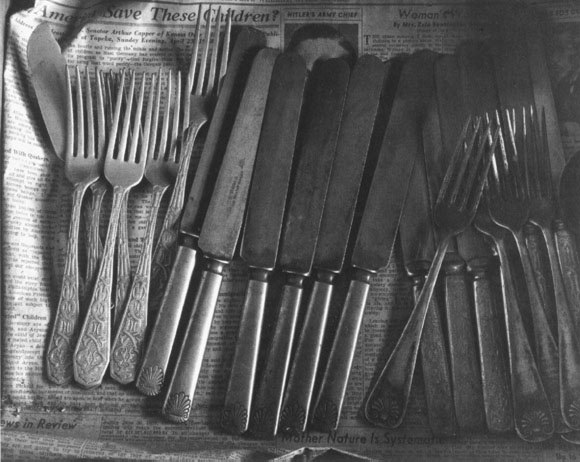 Wright Morris, Silverware, 1946, gelatin silver print, 7½ x 9 3/8 inches. Courtesy of Stephen Bulger Gallery
Wright Morris, Silverware, 1946, gelatin silver print, 7½ x 9 3/8 inches. Courtesy of Stephen Bulger Gallery
E.K-H: You are a man of many ideas. As the years have passed it’s become more than just the gallery. It’s also bookstore and you added Camera, a lounge, screening room and gallery venue. You have new plans all the time. As the media of photography changes, how do you see the gallery changing?
S.B: I think it has been changing all along. Initially most photography was black and white and no bigger than 16 x 20 inches. I am interested in a documentary approach, or what I now call information-based photographs. A documentary approach can have a completely different meaning for each person. I boil it down to an interest in visual information about the world we live in and the medium of photography. 90% of those images used to be fairly small and taken in black and white.
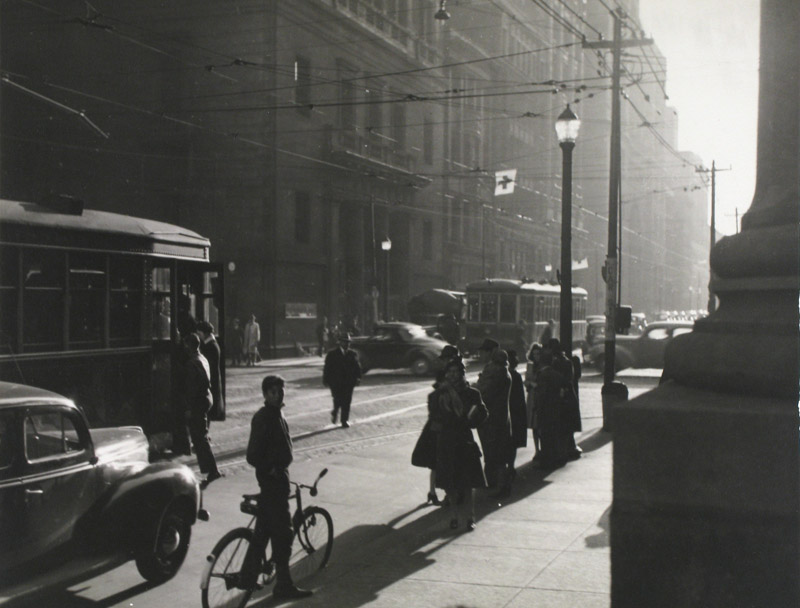 Charles Devenish Woodley, Downtown at the corner of King & Yonge Sts., 5:30PM, 1940, Gelatin Silver Print, 7.5 x 9.5 inches. © Estate of C.D. Woodley / Courtesy of Stephen Bulger Gallery
Charles Devenish Woodley, Downtown at the corner of King & Yonge Sts., 5:30PM, 1940, Gelatin Silver Print, 7.5 x 9.5 inches. © Estate of C.D. Woodley / Courtesy of Stephen Bulger Gallery
Over the years the approach changed. People started using colour, digital instead of film, and making sizes that are much larger than we were used to dealing with twenty years ago. As I am introduced to new approaches, I become a fan of work that I probably would have dismissed twenty years ago. With contemporary art there are a lot of new practices like Sarah Anne Johnson’s. She takes a photograph and then manipulates the surface either digitally or by hand (by gouging parts of the paper or applying gold leaf etc.). In the past I would have considered it crazy stuff, but now I am a complete fan since the photograph tells a much more complete story after she’s dealt with it. I am quite excited about change. We’ve started working with artists like Clive Holden or Sanaz Mazinani who are very involved in using all of the technology they can put their hands on to create all types of experiences including the moving image, which I find quite fascinating. I look forward to having a black box in the gallery to best show this type of work.
 Sarah Anne Johnson, Red Undies, 2013, Unique collaged chromogenic print. Courtesy of Stephen Bulger Gallery and Julie Saul Gallery, New York
Sarah Anne Johnson, Red Undies, 2013, Unique collaged chromogenic print. Courtesy of Stephen Bulger Gallery and Julie Saul Gallery, New York
E.K-H: Your gallery is so established and highly regarded by art lovers in Toronto. I am sure wherever you go people will follow. Do you plan to move?
S.B: Eventually the gallery will move. There were compromises that I made to locate it here. The gallery is narrower and smaller than what I was looking for, and the storage space is small but it was attached to this great facility where Camera was built. I think in the next few years I want to move but I want this next place to be good for twenty years. I don’t feel the need to remain on a busy retail strip anymore. My ideal for a new gallery would be to have a wide space that is also deep where I can design the interior, a loading dock at the back, a lot more storage space for bigger pieces of work and parking. I want a space that serves my vision.
